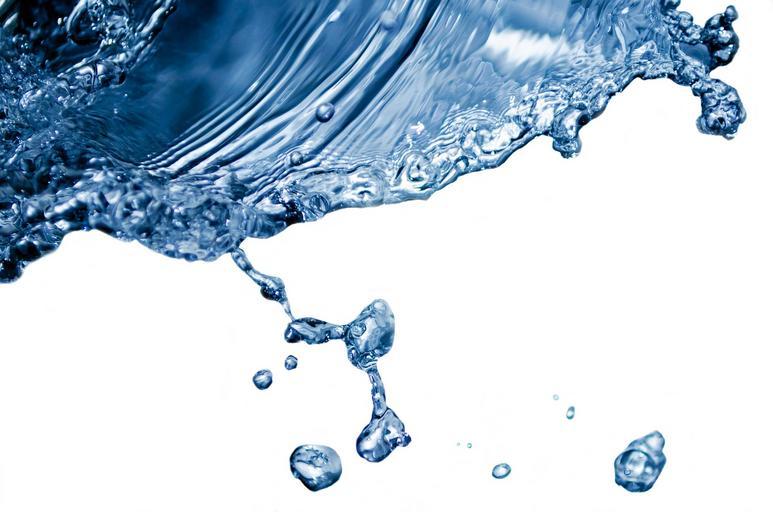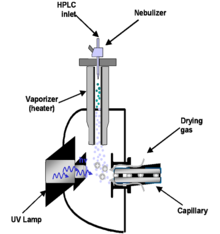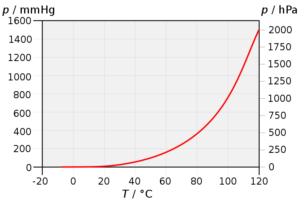In this article we will investigate the topic of Flow vs. Pressure with a focus on how they are worked in the various fields and their applications in the various industrial areas.
| Flow | Pressure | |
| Definition | Flow can be describe as the measurement for any device that air is emitted from that device at any point in time that is given in terms of volume. | Pressure can be describe as the measurement for any device that, at any point in time that is given for an area the force is applied to determine the performance of the compressor which is able to perform in a differentiate the portion of the work. |
| Unit | The unit of the Flow is cubic feet per minute (cfm).cubic meter per second (cms), gallon per second (gps), gallon per minute (gpm). | In S.I. system the pressure is measured the units are, Newton per square metre, Newton per square millimetre, Meganewton per square metre, kilo Newton per square metre. But sometimes foe measure the bigger amount the bigger pressure or bar is used. The another unit that is also used to measure the pressure is Pascal. |
| Application | The application of the measurement of flow in the various water recourses such as controlling the water resource system, designing and many others. | The application of the pressure is prevent from sinking the base of the construction of the building or dams and many others. |
| Dimension | The dimension of the flow for liquid is, M0L3T-1. | The dimension of the pressure is, ML-1T-2. |
| Deviation from other quantities | Q =vA | p =F/A |
| Types | The types of flow is 1.Laminar flow 2.Turbulent flow Laminar flow again divided in three categories, 1.Unidirectional laminar flow 2. Pulsatile laminar flow 3.Oscillatory laminar flow The types of pressure is, 1.Atmospheric pressure 2.Absolute pressure 3.Gauge pressure |

Image Credit – Snappy Goat

Image Credit – Wikipedia
Flow vs pressure graph:
The relation between the flow and the pressure is directly proportional.
Flow:
The meaning of the flow is when a liquid substance goes through in a motion at a specific time at the given cross sectional area of the system.
The flow rate can be defined as the mass of the fluid is flowing per unit area at a standard temperature and pressure.
In an open system by the process the mass of the liquid substance is move one area to another area in a fixed time at a standard pressure.
Pressure graph:
The pressure graph actually looks like a hyperbola.
For draw a pressure graph at first we need to plot the pressure variable horizontally means along with the x axis. After that vertically means along with the y axis we will plot the volume variable. Then the value of the pressure which we get from the experiments should be pointed in the graph.

Image credit – Wikimedia Commons
Flow vs pressure formula:
Here we will discuss the topic about flow vs. pressure formula.
Flow:
Flow Rate Equation:
The formula of the flow rate is, Volumetric flow rate = flow velocity of the fluid * cross section area
Mathematically it can be expressed as,
Q = vA
Where,
Q = Volumetric flow rate of the fluid
V = Velocity of the fluid
A = Cross sectional area
From the above equation we easily can relate the relation is the volumetric flow rate is directly proportional to the velocity and the cross section area. The unit of the flow rate is cubic meter per second.
Read more about Mass flow rate:Its important relations and FAQs
Pressure:
Pressure can be describes as the net force perpendicularly applied in a particular given area at a standard time.
Pressure equation:
The formula of the pressure can be written as, Pressure = Force / Cross sectional area
Mathematically it can be expressed as,
Where,
P=F/A
P = Pressure
F= Net force
A = Cross sectional area The unit of the pressure is Pascal.
Read more about Gauge pressure:Its Important Properties with 30 FAQs
Flow rate and pressure relationship:
Flow:
The relation between the flow and the pressure is directly proportional. If the pressure increases at a standard temperature then the flow also increases and if the pressure is decreases then the flow is also decreases.
Pressure relationship:
Only for an ideal gas which has fixed mass and standard temperature there only the pressure relationship applicable. This topic easily can describe from the Boyle’s law. This law is founded by Robert Boyle in1662.
Boyle’s Law: The Boyle’s law states that, in a fixed mass for an ideal gas the absolute pressure is inversely proportional to the ideal gas volume.
Mathematically it can be expressed as,
ρ ∝ 1/v
pv = Constant … eqn (1)
Where, p = Pressure
v = Volume
The more effective form of the eqn (1) is,
p1v1 = p2v2 = p3v3 = ………..= Constant
The suffixes uses in the above formula is denoted the different conditions.
Flow vs pressure trigger:
The term triggering is attached with the other physical quantities, they are respectively, motion, pressure, impedance, flow and volume.Triggering means the signal which is shown the inspiration.
Flow trigger:
In the mechanical ventilation flow trigger is the one of the most popular method. Flow trigger mainly works in the bias flow.
Flow trigger is allowing the patient who is present in the mechanical ventilation to initiate foe breathing.
Pressure trigger:
In the mechanical ventilation, the flow trigger is designed as that process where the airway pressure would be decreases thus the pressure trigger is appear. The pressure trigger increases the breathing of the patient.
In the mechanical ventilator system the drop of the airway pressure is detected with the help of the inspiratory effort.
Hydraulic flow vs pressure:
Hydraulic flow:
In the piping system the hydraulic flow one of the important factor. In the area of the engineering the engineers are used the hydraulic flow to determine the volumetric flux and also how much power should be required to a pump a fluid.
In a specified time period liquid substance is flow in a particular given area is called Hydraulic flow.
Hydraulic flow is also known as flow rate. The unit of the flow rate is cubic metres per second.
Pressure:
Pressure can be expressed s atmospheric pressure.
The pressure which is available in the atmosphere of the earth’s radius is known as atmospheric pressure.
Centrifugal pump flow vs pressure:
Centrifugal pump flow:
In a centrifugal pump there mainly three types of flow can be present. The types of flow are: Rapid flow, axial flow and mixed flow. This pump is also known as Turbine pump.
Centrifugal pump can be defined as the a mechanical device by which the fluid is go through by the impeller (driven motor).In the centrifugal pump the fluid is transfer its energy to rotational energy by the impeller.
Pressure:
In S.I. unit there are lots of partial units are present to express the pressure, mainly Pascal is used to measure the pressure. Pascal is related to the other partial units is given below,
1 Pa = 1 N/ square metre and
1 kPa = 1 KN/square metre
When the perpendicular force is applied to a particular given surface is called pressure.
Flow rate vs pressure in pipe:
Flow:
Flow is measure by the digital flow meter instrument. The common type of the flow meter used in the industrial area are given below,
- Anemometer
- Electromagnetic
- Ultrasonic
- Fluid dynamic
- Mass flow meter
- Positive displacement flow meter
- Obstruction type
- Inferential
Pressure in pipe:
In the piping system the liquid substance flows through the pipe at a certain time period. For this reason the property of the physical bodies we easily can recognize. These physical properties are density and dynamic viscosity. By this we easily can determine the kinematic viscosity.
When the fluid is flow through a pipe in a certain time period at a unit time pressure is occur in this way, this condition called pressure in pipe.
At first we will decide which material should be used in the pipe for the piping system. Then we could estimate how much length (L) of the pipe we will use in this process from the layout of the construction. From here we easily could find the roughness of the pipe. In the piping system the fluid is pumped that causes corrosion in the material present on the pipe. Now in the whole process three parameters are appearing.
The parameters respectively are head loss, pressure drop and mass flow rate. From the factor of pressure in pipe the cost of the system can reduce and helps to flow the process in a perfectly manner. If any two parameters are given from there the third one we can find so easily.
1. If the head loss and pressure drop is given then we find volumetric flow rate or mass flow rate.
2. Now if mass flow rate and pressure drop is given, in this case we easily can determine head loss.
3. And at the last case mass flow rate and head loss given, then pressure drop also can be determine.
Flow vs pressure drop:
Now we will discuss about the topic of flow vs. pressure drop.
Flow:
A pressure gradientis very important factor for a fluid to flow. If the pressure gradient is high to a system then the flow of a fluid is also high, and if the pressure gradient is low to a system then the flow of a fluid is also low.
Flow can be defined as the, in a certain time the amount of fluid is passes.
Pressure drop:
In piping system the pressure drop is a very important factor. With this pressure drop factor the examiner of the engineering field get a lot of benefits. They design the piping system with this pressure drop which helps them to determine the diameter of the pipe, specifications of the pipe, which valve should to be used and many others.
Pressure drop can be derives as the difference between the total pressure with two points, which a fluid is carry as a network.
Pressure drop or head loss has a relation with the Fanning friction factor f is,
In a alternative way the pressure drop can be written as,
Flow vs. Pressure relationship:
In this section we will briefly summarize the topic of Flow vs. Pressure relationship.Flow and pressure both are the key factor for the measuring of compressed air system, which is helps us to understand the size of the compressor which is used in the system and also the power is applied to the system with the amount of the flow rate and air volume.
Flow:
When unbalanced force is applied in an open system to an object the motion is generared, which is call the flow.
Pressure relationship:
For a particular given mass in an ideal gas absolute pressure is directly proportional to the absolute temperature.
Hi..I am Indrani Banerjee. I completed my bachelor’s degree in mechanical engineering. I am an enthusiastic person and I am a person who is positive about every aspect of life. I like to read Books and listen to music.